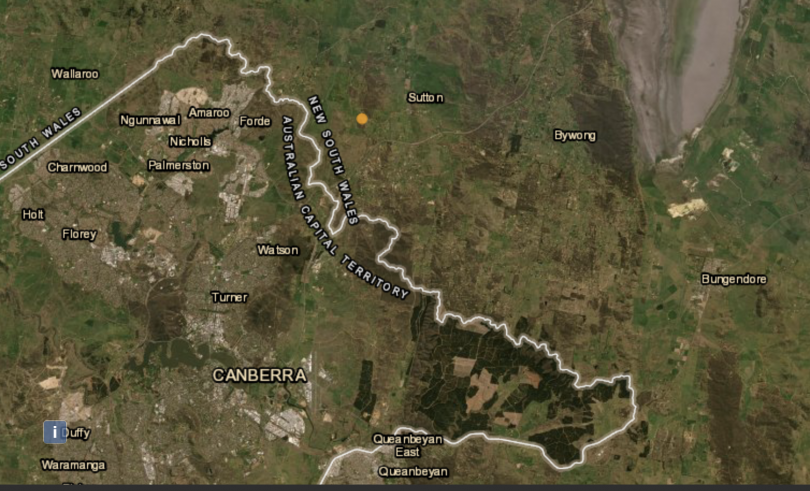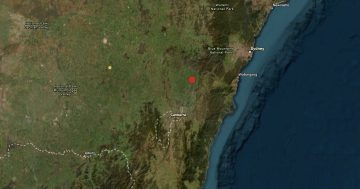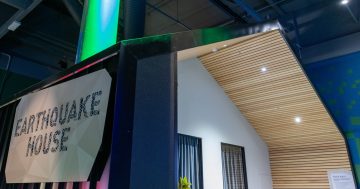
GeoScience Australia located the earthquake epicentre at Sutton. Image: GA.
A second modest earthquake has hit the Sutton region in the early hours of the morning, registering 2.0 in the Richter scale at around 1:30 am.
The earthquake was first recorded at 1.7 magnitude and located at Mulligans Flat Nature Reserve by GeoScience Australia, before the epicentre was placed more accurately at Sutton.
GeoScience Australia received around 90 “felt reports” from people in Gungahlin and over the NSW border.
Seismologist Marion Leiba says the quake was possibly accompanied by a very small foreshock, measured on her seismograph at 121.53am, and followed by an aftershock at 2:50 am. Fascinatingly the quakes occurred at around the same time as a significantly larger earthquake near Fiji.
Marion Leiba says that smaller earthquakes don’t necessarily generate fore and aftershocks and that these will need to be confirmed by GeoScience Australia, but their apparent registration in tandem with the Fiji event on the seismograph makes for “a very interesting graph record”.
The Fiji quake occurred around 2 am and measured a much higher 6.7 on the Richer scale, but took about five minutes to travel through the earth’s crust and be picked up by Marion’s home seismograph. In the photo below of the seismograph read-out, the magnitude 2.0 Sutton earthquake is on the far right-hand side.
Two lines above it, about one-quarter of the way from the left side is the possible foreshock, looking like the main earthquake but much smaller. Two lines below the main quake, near the left side of the photo, is the possible aftershock. One line below the main earthquake, slightly to the left of it, is the magnitude 6.7 earthquake in the Fiji region.

Seismograph readouts show both the Sutton quake and the Fiji event. Image: Marion Leiba
Although not necessarily connected, the quakes are evidence of a period of elevated seismic activity in the general Pacific region.
While the local quake was originally reported at a depth of 10kms, GeoScience Australia has updated its analysis to estimate 1km as the more likely depth.
“I’m much happier about that as an estimate,” Leiba says. “Most earthquakes in our area are very shallow and that’s why we can generally feel them even though they are relatively small events.
“It’s generally thought that you don’t perceive an earthquake below 1.9 on the Richter scale, but here in Canberra, we’ll often feel or hear quite tiny quakes, as low as 1.0, because they’re so shallow. I can recall a quake at Kambah that was only 1.2 but was felt by quite a lot of people.”
Leiba says that there have been plenty of earthquakes around Sutton including the much larger one on January 18. That quake measured 3.1 and had a 1.5 magnitude aftershock 12 minutes after the main event.
Ms Leiba says there is a belt of seismic activity in southeastern Australia about 500 kilometres wide, running from the Hunter Valley area in the north through to Bass Strait in the south and encompassing Canberra, the Snowy Mountains, and Tablelands.
Dalton is probably the most active spot on the belt and even Murumbateman is more seismically active than Canberra. But Ms Leiba says that on average there are two quakes each year within a 20km radius of central Canberra.
In the past two decades, 245 earthquakes have been registered in the Canberra region.
Geoscience Australia asks anyone who feels an earthquake to complete a “felt report”, constructing a record of how widely their effects are felt. You can do so here.















